Unveiling the Colors: Explore the Vibrant World of LGBTQ+ Flags with IGLTA Foundation
At the IGLTA Foundation, we believe in fostering inclusivity, promoting understanding, and celebrating the diversity within the LGBTQ+ community. As part of our commitment to providing valuable resources, we are proud to present this comprehensive guide to LGBTQ+ flags.
Understanding the flags of our community is an essential step towards creating an inclusive environment where everyone feels seen, heard, and valued. These flags represent the diverse identities and experiences within the LGBTQ+ spectrum, each with its own unique symbolism and history.
By familiarizing ourselves with these flags, we can honor and respect the rich tapestry of identities within our community. They serve as powerful symbols of pride, unity, and visibility, providing a sense of belonging and empowerment to individuals across the globe.
Moreover, knowing the meaning and significance of each flag allows us to engage in meaningful conversations, advocate for equality, and challenge stereotypes and prejudices. It enables us to build bridges of understanding, promote allyship, and create spaces that are truly inclusive and welcoming.
The LGBTQ+ Flags Landing Page is designed to be an educational and informative resource, providing a comprehensive overview of the various flags that represent different sexual orientations, gender identities, and gender expressions. You will find detailed descriptions associated with each flag, allowing you to deepen your knowledge and appreciation for the diverse identities within our community.
We invite you to explore the different flags, embrace the richness of our community, and celebrate the beauty of LGBTQ+ diversity. Together, we can create a world where everyone is embraced, respected, and celebrated for who they are.
Let the journey into the vibrant world of LGBTQ+ flags begin!
Note: Each LGBTQ+ flag represents a unique narrative and holds personal significance for individuals. We invite you to explore the flags by double-clicking on each one to uncover their rich symbolism and the stories they tell. It's important to remember that the meanings and interpretations of these flags may vary, reflecting the diverse experiences within the LGBTQ+ community. The information provided serves as a general guide, encouraging ongoing learning and fostering a deeper understanding of the multitude of perspectives within our community.
The rainbow flag
Rainbow flags are powerful symbols of LGBTQ+ pride and progress. Originally designed in 1978, they represent diversity, inclusivity, and the fight for equality. Over time, rainbow flags have evolved and expanded to include versions that highlight racial diversity and transgender experiences. These improved flags reflect the ongoing progress and inclusivity within the LGBTQ+ community. By embracing these flags, individuals and communities show support for LGBTQ+ rights, foster inclusivity, and promote acceptance. They serve as beacons of hope and signify safe spaces for LGBTQ+ individuals. Rainbow flags represent our commitment to progress, diversity, and the journey towards equality.
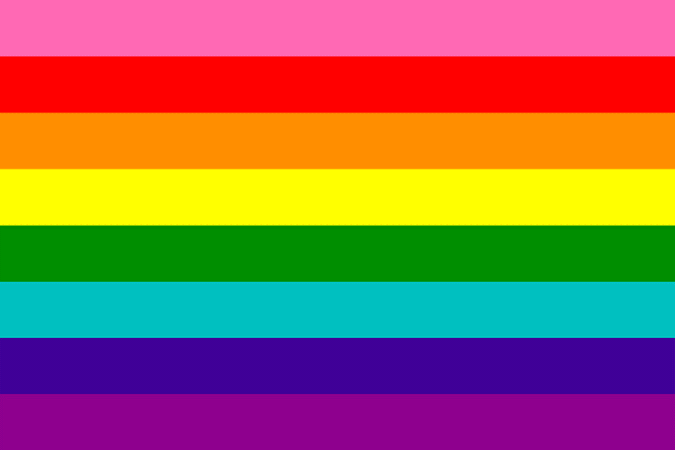
The Retro 8 flag was designed by Baker and publicly showcased for the first time on June 25th, 1978, during the San Francisco Gay Freedom Parade.
Retro 8 Flag

Following the assassination of Harvey Milk, the demand for the rainbow flag increased, leading to a need for greater production. However, the dye for the pink stripe became unavailable, resulting in its removal from the design.
1978-1979 Flag
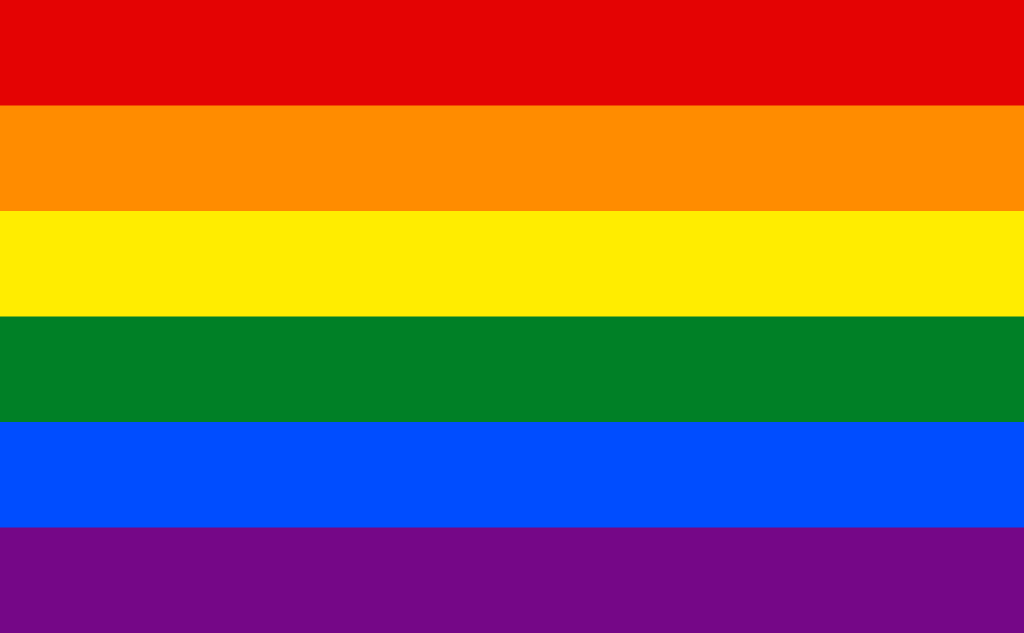
During a subsequent iteration, Baker removed the turquoise stripe to achieve an even number of stripes, resulting in the most widely recognized version of the flag. Each color stripe on the flag represents a distinct meaning, which is displayed alongside the flag.
Popular Rainbow Flag

Amber Hikes is credited with the creation of the Philadelphia Pride flag, which made its debut in 2017. The introduction of black and brown stripes was a deliberate response to the necessity of amplifying the experiences of queer people of color. This addition aimed to address the lack of intersectionality within the community, shedding light on this important aspect. Additionally, the black stripe serves as a poignant tribute to those who have lost their lives to AIDS.
The Philadelphia Pride flag
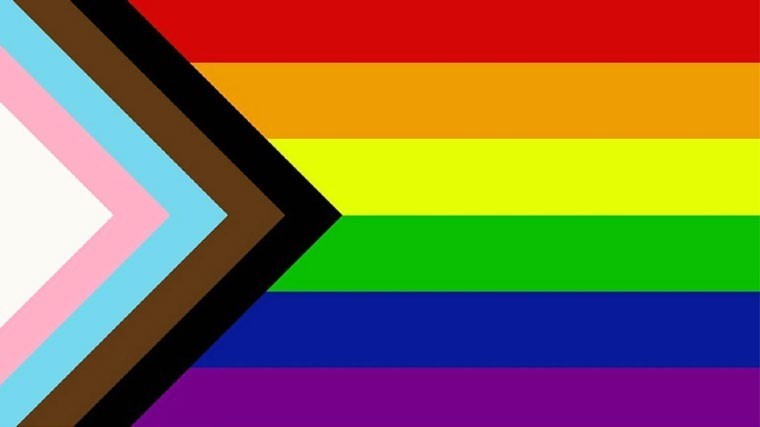
The inception of the Progress Pride flag dates back to 2018 when Daniel Quasar, a non-binary activist, designed it with a specific objective in mind. This inclusive flag strives to symbolize various communities, including individuals affected by AIDS, people of color, and transgender individuals, all under a single emblematic representation.
Progress Pride Flag
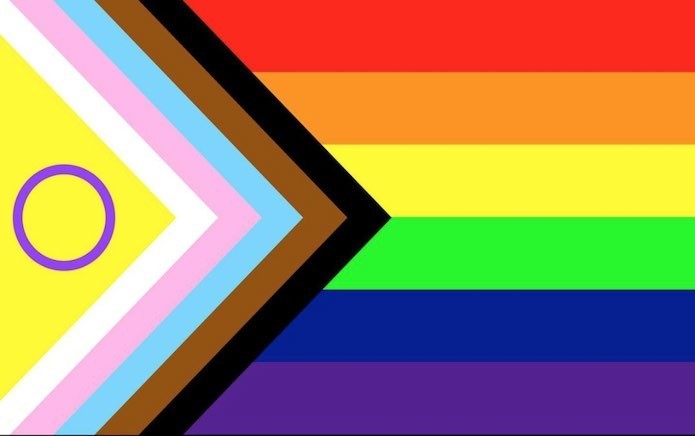
Valentino Vecchietti is the visionary behind the creation of this flag, which incorporates the intersex symbol into the Progress Pride flag, resulting in a more comprehensive and inclusive symbol. This flag's inception took place within the context of a campaign initiated by Intersex Equality UK in 2021.
Progress and Intersex Pride Flag
Flags for Diverse LGBTQ+ sub-communities and Identities
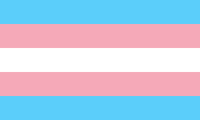
The trans flag, crafted by Monica Helms, an openly trans American Navy veteran, debuted in 1999. While initially showcased at Phoenix's 2000 Pride Parade, its global popularity surged in 2013. Distinguished from other pride flags, the trans flag is reversible, signifying the quest for correctness in trans lives. Its blue stripes embody the traditional masculine color, the pink stripes represent the traditional feminine color, and the white stripe signifies intersex, transitioning, and other non-conforming gender individuals.
Transgender flag

Although the rainbow flag is commonly associated with gay men, a distinct flag exists. This newer version emerged from the original one, which solely featured blue shades and perpetuated gender binaries by assigning blue to men and pink to women.
Gay pride flag

The Lesbian Pride Flag, introduced by blogger Emily Gwen in 2018, has gained widespread recognition as a common choice, despite the absence of an official consensus or designated lesbian flag. An alternative version with five stripes exists but is not as prevalent.
Lesbian pride flag
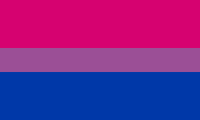
In 1998, bisexual rights activist Michael Page designed the bisexual flag to enhance visibility for the bisexual community. The pink stripe represents same-gender attraction, the purple stripe symbolizes attraction to two or more genders, and the blue stripe signifies attraction to different genders. Page emphasized the flag's depiction of colors blending seamlessly, reflecting the fluidity and integration of bisexual individuals within the gay/lesbian and straight communities. This color scheme has been incorporated into popular culture, including film, TV series, and music videos, often referred to as "bisexual lighting.
Bisexual flag
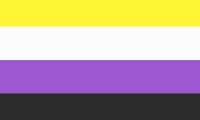
The nonbinary flag, created by Kye Rowan in 2014, emerged due to the perception that the genderqueer flag encompassed experiences that were too broad for nonbinary individuals. The yellow stripe represents those who identify outside the gender binary, the white stripe represents those identifying with multiple or all genders, the purple stripe embodies male and female genders, and the black stripe symbolizes agender individuals.
Non-binary flag
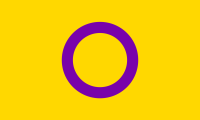
Designed in 2013 by Morgan Carpenter, co-chair of Intersex International Australia, the intersex flag incorporates a yellow background and purple color. These gender-neutral colors represent inclusivity, while the circle symbolizes wholeness and the boundless possibilities within the intersex community. Carpenter aimed to depict the struggle for bodily autonomy and integrity, emphasizing the right of intersex individuals to define their own identities.
Intersexual flag
The Gay, Lesbian, Transgender, Non Binary, Intersex, and Bisexual flags hold significant importance within the LGBTQ+ community as powerful symbols of identity, pride, and inclusivity. These flags represent the diverse spectrum of sexual orientations and gender identities, providing a visual representation and recognition for individuals who identify with these diverse experiences. Each flag carries its own unique symbolism, colors, and history, representing the struggles, achievements, and resilience of the respective communities. These flags serve as a source of empowerment, solidarity, and visibility, fostering a sense of belonging and unity within the LGBTQ+ community and promoting awareness and acceptance in society at large. By proudly displaying and recognizing these flags, we honor the rich diversity and lived experiences of individuals across the spectrum of gender and sexuality, promoting a world that celebrates and embraces everyone's authentic selves.
The pansexual, asexual, agender, and gender fluid flags hold significant importance in the LGBTQ+ community as symbols of representation and visibility for individuals who identify with these identities. These flags play a crucial role in fostering a sense of belonging and recognition for pansexual, asexual, agender, and gender fluid individuals. By having distinct flags that represent these identities, it allows individuals to express their authentic selves and helps to combat erasure and invisibility within society. The flags serve as powerful symbols that facilitate conversations, increase awareness, and promote understanding about these identities, ultimately contributing to a more inclusive and accepting society. Furthermore, these flags provide a source of pride and empowerment, allowing individuals to connect with others who share similar experiences and challenges
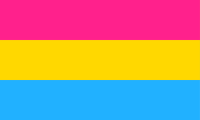
The pansexual flag, which was adopted in 2010, holds significant symbolism within the LGBTQ+ community. Comprised of three horizontal stripes in pink, cyan, and blue, the flag represents the diverse spectrum of attraction experienced by pansexual individuals. Each color carries its own meaning, contributing to the overall message of inclusivity and acceptance. The pink stripe embodies attraction to individuals who identify as female, while the blue stripe represents attraction to individuals who identify as male. These colors acknowledge and honor the diverse genders and binary identities that pansexual individuals can be attracted to. However, what sets the pansexual flag apart is the presence of the cyan stripe, which signifies attraction to nonbinary individuals. This inclusion of the nonbinary identity recognizes and celebrates the unique experiences and attractions that extend beyond the gender binary. By incorporating these distinct colors, the pansexual flag promotes visibility, understanding, and acceptance for pansexual individuals and their experiences of attraction. It serves as a powerful symbol of diversity and challenges the societal norms that confine attraction within traditional gender boundaries. The flag represents the affirmation that love and attraction transcend the constraints of gender, allowing individuals to embrace and celebrate their pansexual identities with pride.
Pansexual flag
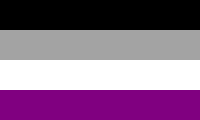
Introduced in August 2010, the asexual pride flag has four horizontal stripes, each carrying its own significance. From top to bottom, the flag features black, gray, white, and purple stripes. The black stripe represents asexuality, signifying the absence of sexual attraction. The gray stripe symbolizes the gray area between sexuality and asexuality, acknowledging individuals who identify as gray-A or demisexual. The white stripe represents non-asexual partners and allies who support the asexual community. Finally, the purple stripe represents the asexual community itself, promoting unity and solidarity among asexual individuals. Together, these colors and symbols create a powerful representation of asexuality and the diversity within the community.
Asexual flag

The agender pride flag, unveiled in 2014, features a mirrored design of seven horizontal stripes. The black and white stripes symbolize an absence of gender, while the gray stripe represents semi-genderlessness. The central green stripe represents nonbinary genders.
Agender flag
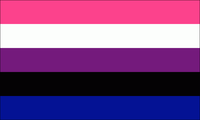
The genderqueer flag, designed in 2011 by Marilyn Roxie, a genderqueer writer and advocate, consists of lavender, white, and chartreuse stripes. The lavender stripe symbolizes a blend of blue and pink, representing androgyny and queer identities. The white stripe represents agender and/or gender-neutral identities. The chartreuse stripe, being the inverse of lavender, signifies third gender identities and identities that exist outside the gender binary.
Gender Fluid flag

